RUGBY TRAINING
The Definitive Guide (2023 Update)
You’re looking for the best rugby training resource on the web.
Luckily you’ve come to the right place.
In this guide we focus our attention on how you should train in the gym to maximise your Rugby performance on the field.
Most players train like bodybuilders for Rugby and not only is this stupid but it can even be detrimental to your performance (and injury rate).
Anyways, this guide is HUGE.
For the lazy ones, you can skip reading about the science behind our carefully formulated training system and download the PDF workouts right now.
For the rest of you, read on, take notes and absorb the knowledge.
In 8 weeks time you’ll be thankful you started training the proper way for performance.
Side note: We are known for our rugby clothing range of tees, hoodies, joggers, shorts, jumpers, 3/4 sleeves and more for casual, gym or playing.
Contents
CHAPTER 2 The Importance of Strength
CHAPTER 3 Training Systems Overview
CHAPTER 4 The Rugby Warfare Training Plan Template
Introduction
Whatever your sport, Strength is Vital. Strength, being the ability to generate force, means that you can more easily dominate your opponent.
Being strong also reduces your risk of injury, reduces fatigue, and provides your body with armour in the form of muscle. When two players of equal size and skill meet, nine times out of ten, the stronger player will prevail.
Unfortunately, the practice of gaining strength has been muddied in recent years by the sport of bodybuilding. Bodybuilding builds bigger muscles but these muscles are not necessarily stronger. Bodybuilding focus on “show” and not “go”. There is nothing inherently wrong with bodybuilding – if your goal is maximal hypertrophy (muscle growth), but if you want real-world strength that you can use out on the field, there are better ways to train.
You often see professional rugby teams play touch rugby now to ensure players are still nimble but to also try and offset the agility lost by weight training. It’s recommended that you do play a lot of touch rugby so that you get your body used to being on your toes.
Hypertrophy training will increase strength but it’s an accidental by-product. The cross-sectional size of a muscle increases that muscles’ potential for force production but big muscles are not always as strong as they look. However, training for strength will increase muscle size even though it’s not the primary goal.
That’s not to say hypertrophy is pointless – far from it. Increasing your overall muscle size can be very beneficial as the big guy will normally dominate the smaller guy BUT muscle gained should not be purely decorative. Muscle that is as strong as it looks is often called functional hypertrophy.
Another drawback of bodybuilding training for athletes and sportsmen is it tends to treat the body as a collection of individual body parts which are trained on different days of the week using a split routine. For example, legs might be worked on Monday, chest on Tuesday, back on Thursday and shoulders and arms on Friday.
Such a routine allows the bodybuilder to devote a lot of time to a relatively small part of their body and perform a high volume of various exercises. Such an approach is productive for hypertrophy but less so for strength. It’s a quantitative rather than a qualitative approach to training and in strength training, more is not necessarily better.
Split programmes also treat the body in parts and not as a whole. In sports, as in daily life, the legs do not work independently of the back, the arms do not work independently of the core and the chest does not work independently of the shoulders. Muscle groups work in synergy and not in isolation. If you want your body to function as a whole, it needs to be trained as a whole, and that means focusing more on movements than individual muscles.
Hypertrophy-specific training undoubtedly has its place in strength training but strength training is NOT bodybuilding. Many sportsmen fail to reap the myriad of benefits that strength training provides because they train like a bodybuilder.
Bodybuilding is a worthy pursuit – if you want to look good but have no real interest in improving your performance. If, however, you want to perform better than ever before, there are better ways to spend your gym time than doing set after set of bodybuilding training.
CHAPTER 1
The Rugby Player

In this chapter we dive right in to the basics of the modern day rugby player. We cover all the important characteristics that an elite rugby player possesses which will be the foundation of this guide. This chapter is vital. Do not skip this if you’re serious about drastically improving your on field performance.
To be successful, rugby players need a variety of fitness “weapons” in their armoury. The game has changed a lot over the last few years – forwards are no longer just big, slow, pushing machines and backs have to do more than just wait for the ball and run in tries but must be able to compete physically with all the players on the pitch.
Each player has to be fit (and strong) enough to battle up and down the pitch at an often frenetic pace.
Fitness, which is the successful adaptation to a stress, is specific. That is to say, you are fit for what you do. To determine that type of training you need to do, it is important to analyse the physical demands of rugby and then construct a training plan to meet those demands. Rugby players need the following fitness attributes:
Aerobic Fitness
This is the ability to take in, transport, and utilize oxygen and is also called cardiovascular fitness. Although rugby is primarily an anaerobic (without oxygen) sport, aerobic fitness is still important. Being aerobically fit means you will recover faster from bouts of anaerobic exertion. In other words, you’ll get your breath back faster. Also, if you have a high level of aerobic fitness, you will have a higher lactic acid threshold which simply means you will be able to work harder for longer without undue fatigue.
Aerobic fitness is also important for making sure you can last an entire game and don’t “blow up” and fatigue before the final whistle. And if the game goes into overtime, it is often the fittest team that prevails. Finally, being aerobically fit means you can train harder and more often as recovery rates are better.
Just as rugby players should not train like bodybuilders, nor should they train like marathon runners. Excessive long duration, low intensity cardio can impair strength gains. For that reason, aerobic exercise should be intense enough to trigger increased fitness but not so long that energy is wasted.
Anaerobic Fitness
Rugby is predominately an anaerobic sport. That is to say, it is made up of brief periods of explosive play interspersed with breaks. A rugby players training should reflect this. Interval training, circuit training, sprints, simulated match training – all of these start/stop methods will help develop anaerobic fitness. With a good foundation of aerobic fitness, you will recover more quickly from bouts of anaerobic exertion. During a match, intervals of work can be very brief – just a few seconds, or up to a minute or two and training, if it is to specific, should mirror these demands.
Speed
Rugby is predominately an anaerobic sport. That is to say, it is made up of brief periods of explosive play interspersed with breaks. A rugby players training should reflect this. Interval training, circuit training, sprints, simulated match training – all of these start/stop methods will help develop anaerobic fitness. With a good foundation of aerobic fitness, you will recover more quickly from bouts of anaerobic exertion. During a match, intervals of work can be very brief – just a few seconds, or up to a minute or two and training, if it is to specific, should mirror these demands.
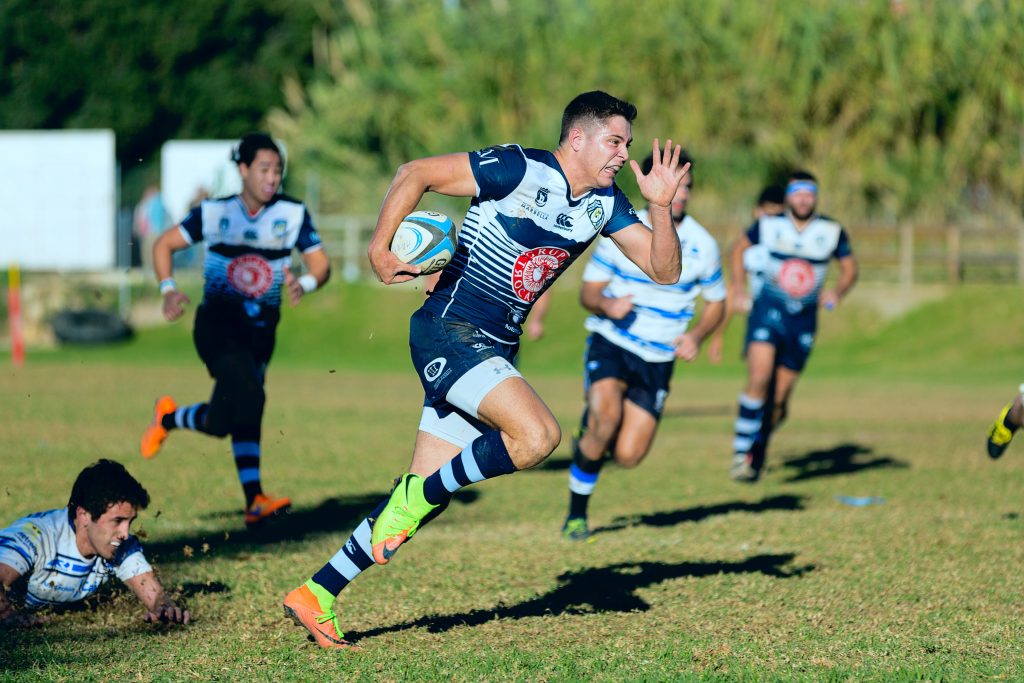
Mobility & Flexibility
In the early days of training for sports, strength training was said to make you “muscle bound” suggesting that lifting weights would make you slow, less mobile and flexible. While this is simply not true, it is still important that rugby players dedicate some training time to developing and maintaining mobility and flexibility. Stretching, using a foam roller, and getting regular deep-tissue massages can all help. While you do not need the flexibility of a gymnast, adequate flexibility will increase your functional range of movement so tight muscles don’t cause movement restrictions. Increased flexibility may also reduce your chances of both chronic and acute injury; a muscle that won’t stretch is more likely to tear.
Many people make the mistake of only stretching as part of a cool down or once a muscle has become overly tight and problematic. Avoid this by creating and following a prescriptive stretching and mobility programe designed to address your specific needs. For rugby, this usually means the hamstrings, hip flexiors, pecs and neck muscles.
Agility & Coordination
Straight line speed is important but, more often than not, players need to be able to change direction to avoid or intercept other players. This ability is called agility. Agility is your capacity to respond to a stimulus or, in other words, take in information, process it, and then respond accordingly. These decisions need to be made almost instantly. Agility training often involves drills using special agility ladders, low hurdles, cones, marked lines, and other obstacles as well as running patterns against notional or real opponents. Agility, and specifically the ability to change direction quickly, requires power – the next topic in this chapter.
Coordination is the ability to wilfully control your limbs to produce smooth, accurate movements and can be thought of as the brain/muscle connection. Catching a ball, side-stepping an opponent, kicking the ball while running hard are all rugby-specific tasks that demand a lot of coordination. Like all fitness components, coordination can be trained but is also a skill some players have naturally. Players who are naturally skilful are usually highly coordinated. Regularly practicing the skills of rugby will help improve coordination.
Power
Strength produced quickly is properly called power. Where a slow squat performed using a heavy weight is an expression of strength, an explosive vertical jump is an expression of power. Power requires the ability to recruit a lot of motor units (groups of muscle fibers controlled by a single motor nerve) simultaneously. Power is as much about the nervous system as it is about muscle size and/or strength. This is why very lightly muscle muscled weightlifters and boxers can produce similar performances to their heavier, more muscled counterparts.
Bodybuilding, that tends to focus on controlled and even slow movements, will do very little for increasing power production. In fact, it may even be contradictory. Power training typically involves explosive, short-duration activities such as jumping exercises called plyometrics, throwing, Olympic lifting, and performing compound exercises like squats and deadlifts very explosively using light to moderate weights. Power training should be included in all rugby player’s workouts.
Strength
The ability to generate maximal force, strength, in the words of coach Mark Rippetoe, makes everything better. He also said that stronger people are harder to kill and therefore more useful! Hyperbole aside, strong muscles are more resilient and resistant to fatigue, can make the difference between winning or losing possession, and can be what stands between winning and losing. However, it’s not enough to train for strength alone; strength training must be part of a holistic programme that also covers all the fitness components above. The aim of this book is to introduce you to some of the best, most rugby-appropriate strength training methods around so that your gym workouts are as productive as possible.
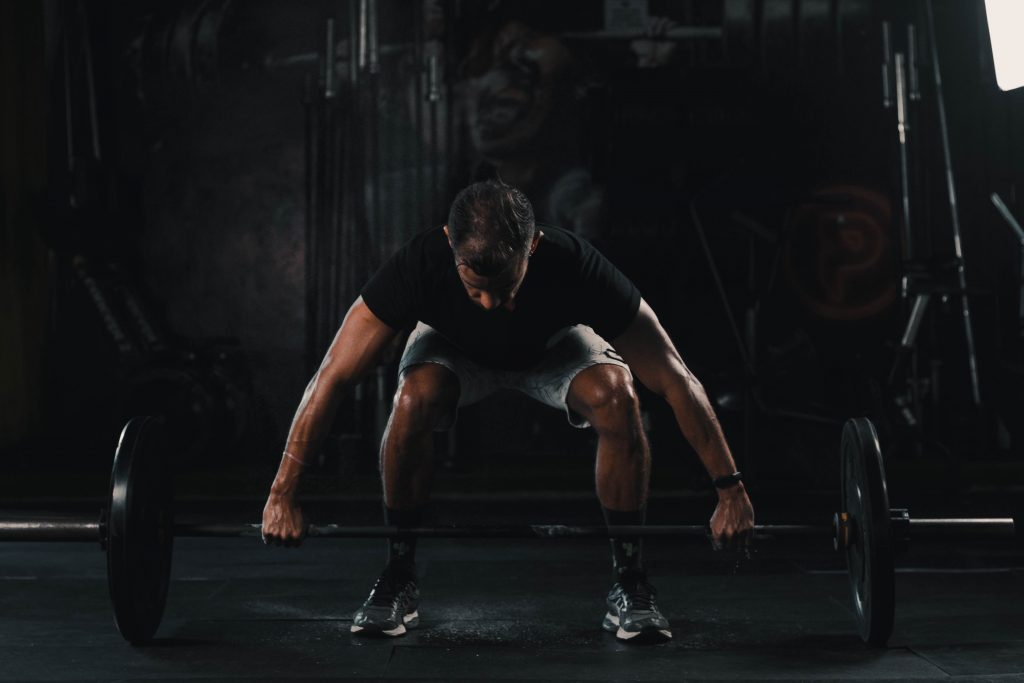
CHAPTER 2
How Important Is Strength
In The Gym?
Whatever standard of rugby you play, whatever your position, however long you have been playing, strength(or lack of it!) will factor in your success.
Strength is, by and large, developed in the gym. Strength training is easily quantifiable – if you can lift more weight or lift the same weight for more reps, you have gotten stronger. Numbers do not lie and if the weight on the bar goes up, whatever you are doing is working.
In contrast, bodybuilding focuses more on muscle appearance than muscle performance. Results are measure in inches gained or body fat lost rather than the amount of weight lifted. Lifters often chase the “pump”, muscle soreness or simply fatigue rather than anything measurable like kilos lifted. People do often believe rugby players train too much like bodybuilders, check out Eben Etzebeth arms for example, they are bodybuilder like!
For this reason, if strength is your goal, it’s time to start thinking about your performance in certain key movements and stop thinking about your biceps, traps, or calves in isolation. Don’t worry though, these muscles won’t be neglected and may even be targeted specifically with so-called accessory or assistance exercises but, when it comes to building strength, there are four key exercises that need to become your “bread and butter”.
Squats
Often referred to as the king of exercises, squats build leg strength and power. Unlike leg presses, leg extensions and leg curls, which are all inferior for developing strength, squats also require and develop core strength. In fact, heavy squats work virtually every muscle in your body directly or indirectly. Jumping, sprinting, scrummaging – your performance in these key rugby skills will improve if you squat hard and often.
There are several squat variations to use. Choose one, work it hard for several weeks or months and then, if progress stalls, switch to another. Also, select your squats based on your anthropology (body shape), limitations from old injuries and what feels best.
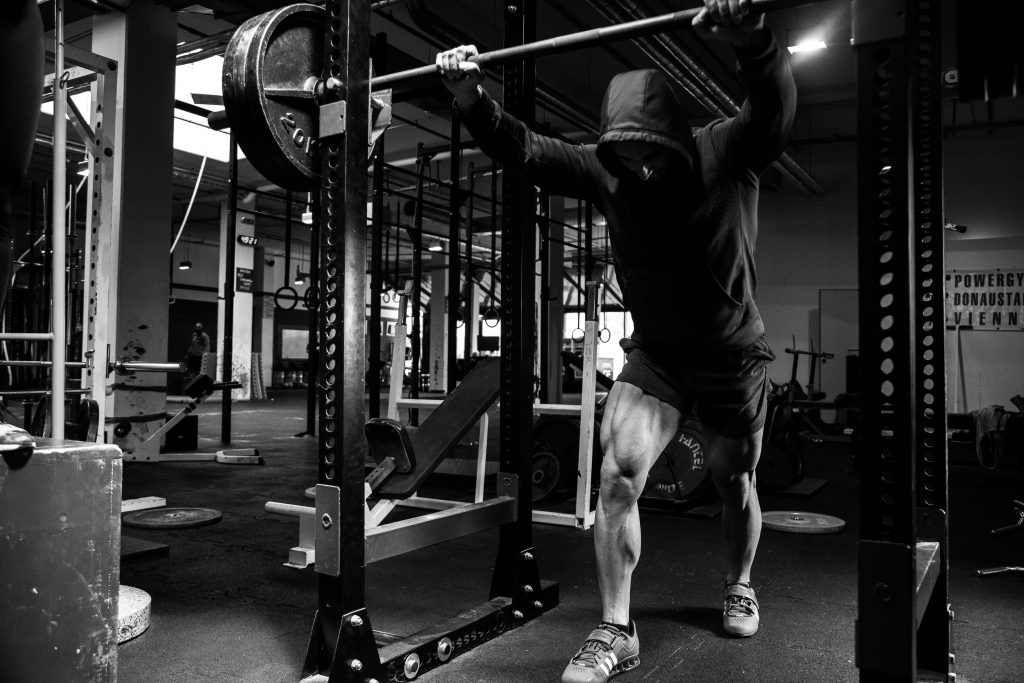
Barbell back squat – high bar
Performed with the bar resting high on the traps and typically with a shoulder-width stance, high bar squats produce an upright torso position that favours taller lifters. Best done wearing weightlifting shoes that have a solid, built-up heel.
Barbell back squat – low bar
In the low bar back squat, the bar rests lower on the traps and roughly level with the shoulders. This position shortens the lever length between the weight and the hips which takes stress off the lower back. Low bar squats inevitably involve more forward lean and are better suited to shorter lifters. Low bar squats are usually performed using a wider-than shoulder-width stance and flat shoes which help keep the shins vertical. Low bar squats can be hard on the shoulders and might not be the best option of you have a history of shoulder problems or poor shoulder/chest flexibility.
Front Squats
With the barbell resting on the front of the shoulders, the front squat keeps your torso upright and involves less torque on the lower back. It requires good upper body flexibility and tends to emphasize the quadriceps over the hamstrings. Stance can vary from wider-than to less-than shoulder-width and front squats are generally best performed wearing Olympic weight lifting shoes. Big arms can also make front squats prohibitively hard for some lifters.
Safety Bar Squats
A safety bar is cambered and has a built in yoke. Squatting with a safety bar feels like a front squat but is much easier on the shoulders. The camber in the bar means the weight is slightly forward of your base of support which means you have to work hard to stay upright which will strengthen your lower back. Because of the mechanics of the safety bar squat, less weight is required to provide good results. This can be beneficial for injured players.
Zercher Squats
This oddly-named exercise involves squatting with the bar held in the crook of your elbows. Holding the weight in front of you means that your lower back has to work overtime to maintain an upright torso. The main limiting factor in Zercher squats is pain tolerance – heavy weights can be very uncomfortable on the arms. This can be remedied by using a bar pad or wrapping a towel around the bar. Zercher squats make for an ideal deloading exercise as you simply cannot lift as much weight compared to front, back or safety bar squats.
Deadlifts
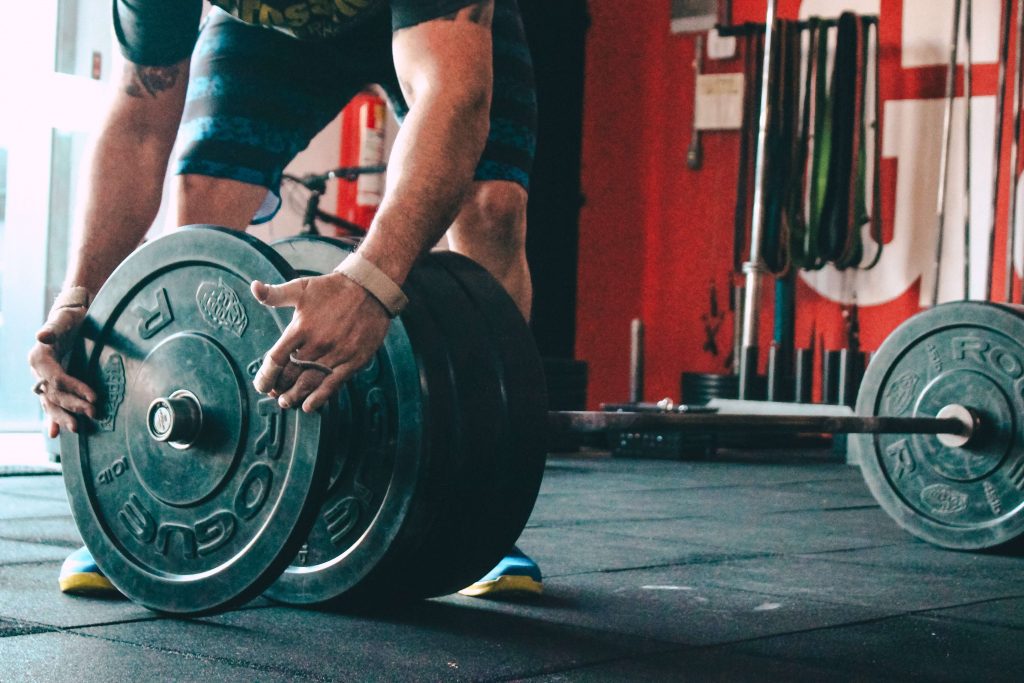
The simple act of bending down and picking a weight up off the floor is arguably one of the best strength exercises you can do. Working the entire back of your body from your heels to the nape of your neck, deadlifts will do more for your strength than almost any other exercise. It’s debateable where deadlifts are a leg exercise (they hammer your hamstrings and glutes) or a back exercise (they work erector spinae, lats and traps) but what isn’t debatable is how good they are for developing strength. Unlike squats, that require spotters and/or a squat rack for safety, you can deadlift on your own and simply drop the weight if you cannot complete a rep. There are several deadlift variations to consider:
Conventional barbell deadlift
Performed with a hip-width stance, the conventional deadlift favours shorter lifters with good hamstring flexibility. Executed with an overhand grip or a mixed grip as preferred, conventional deadlifts are the most common variation of this barbell exercise. Focus on maintaining a strong, tight lumbar curve when performing this or any other deadlift variation.
Sumo deadlift
A wide stance and hands inside the feet make this deadlift a little easier for tall lifters as it reduces the distance the bar has to travel. More hip and hamstring dominant than the conventional deadlift, pulling sumo requires good hip mobility. If you normally pull conventional deadlifts, pulling sumo-style can make a nice variation from time to time.
Deficit deadlift
Deficit deadlifts involve standing on a two to four-inch thick platform which essentially increases the range of motion and therefore the difficulty of this exercise. Requiring good flexibility, deficit deadlifts make deadlifts harder without increasing the load. This can be useful for lifters who want to train hard but need to limit the weight lifted e.g. during the playing season or when returning from injury.
Rack/Block deadlift
Raising the weights to just below knee-height decreases the range of movement and allows heavier weights to be lifted. This is also a good version for tall lifters who find it hard to maintain a strong lumbar arch when performing conventional deadlifts. A period of training on heavy rack/block pulls should translate to better conventional or sumo deadlift performance.
Bench Press
While squats are the king of gym exercises, the bench press is arguably the most popular! Bench pressing will develop your chest, shoulders and triceps which are your primary pushing muscles. A strong bench press should improve your ability to push players away from you.
Most people like to bench press; it’s metabolically easier than squats and deadlifts as it’s performed lying down. That doesn’t mean it isn’t valuable and nor should be underestimated. Bench press ability is an important indicator of upper body strength which is why it’s used in the NFL as a performance marker. There are several types of bench press to consider:
Barbell bench press
Adjust the hands so that, at the bottom of the press, the forearms are vertical. This is mechanically the best position for generating maximum force. A slight lower back arch with feet planted firmly on the ground will also aid performance. Lower the bar to the highest part of the chest – usually just below the nipple line – to take stress off the shoulders. Never bonce the bar off your chest but make sure it touches lightly.
Dumbell bench press
Working with dumbbells instead of a barbell means that each arm is trained independently. This helps ensure both arms are working equally hard. Dumbbell bench presses also allow for a greater range of movement and require and develop control and balance. On the downside, getting heavy dumbbells into position alone can be hard. Some lifters find dumbbell bench pressing easier on their shoulders.
Paused bench press
Using a barbell or dumbbells, pause mid-rep with the bar resting lightly on your chest. Do NOT relax! This pause means that each rep starts from a dead stop which makes the exercise harder and also develops explosive starting strength. A good method if you want a lighter-than normal but still productive upper body workout.
Narrow-grip bench press
A shoulder-width hand placement increases range of movement at the shoulder and also places an extra emphasis on the triceps and deltoids. Some lifters also find a narrower hand placement less stressful to the shoulders. Combined with the pause described above, the narrow grip bench press can be every bit as tough as regular bench presses but using much less weight. Good for anyone with injuries.
Incline/decline bench press
For both barbell and dumbbell bench presses, exercising on an incline or decline places a small but significant emphasis on either the upper chest (incline) or the lower chest (decline). Bodybuilders will select incline or decline to target specific areas of the chest but for strength training these variations simply allow for greater workout variety. Incline bench pressing tends to be slightly weaker and decline bench pressing is often slightly stronger than flat bench presses.
Military Press
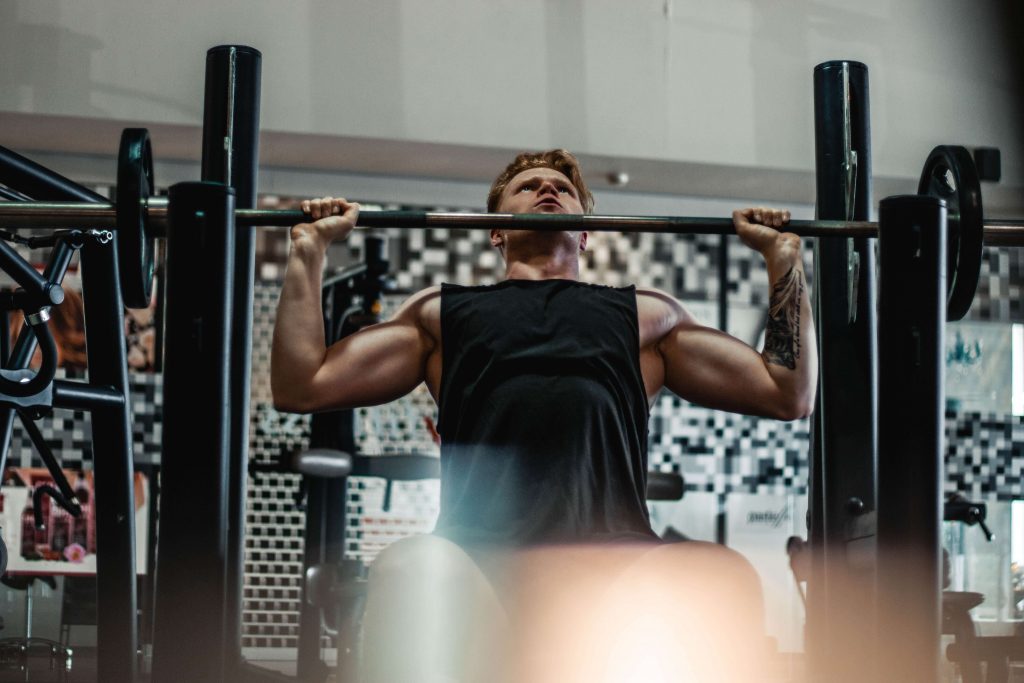
The military press is the term used to describe many overhead pressing exercises. Traditionally, the military press is performed standing, with straight legs, and using a barbell pressed from the front of the shoulders to full arm extension. The bar can be first cleaned to the shoulders or taken from a rack. Over the years, however, the term military press has been used for any type of shoulder press – seated or standing, barbell or dumbbell. Overhead pressing develops shoulder and triceps strength and helps keep upper body pushing muscles balanced. Over-emphasising the bench press can lead to over-developed pecs and shoulder injuries. There are several types of military press to consider:
Standing barbell military press
The classic upper body exercise, the standing barbell press not only develops strong shoulders and triceps, it also develops a strong core too. Hands should be roughly shoulder-width apart so that forearms are vertical at the beginning of the movement. The bar should travel straight up which will necessitate a small backward lean. As the bar passes the face, the head should be pushed forward between the arms so the weight is directly over the base of support. Legs should not contribute to the lift and should remain straight (but not locked) throughout.
Dumbell military press
Using dumbbells means that each arm must work independently which helps ensure balanced strength development. It also keeps the weight over the shoulders which many lifters find more comfortable. On the downside, the dumbbells will have to be cleaned up to shoulder height which may make the exercise harder to perform for some. Lifting and controlling two dumbbells instead of a single barbell means less weight is normally used.
Seated barbell/dumbell military press
Both the barbell and dumbbell military presses can be performed seated. This provides lumbar support which reduces core involvement. Many people find that they can lift more weight in the seated variations simply because core strength ceases to become a limiting factor. However, performing overhead presses while seated reduces the functionality of these exercises.
Push press
Performed standing with a barbell or dumbbells, the push press combines a quarter-depth squat with a powerful overhead press. The idea is to start the movement with a strong leg drive and finish it with the arms. This makes the push press a good total body exercise that allows for heavy weights to be lifted. A strong core is essential for this exercise.
While you will need to do more than these four exercises, emphasizing them in your workouts will lead to increased strength more effectively than other, second-tier, exercises such as leg presses, dumbbell flyes and biceps curls.
These exercises involve the greatest amount of muscle, replicate the movements of daily life and sport and allow for the greatest weights to be lifted. There is a reason that many of the best strength programmes are built around these four cornerstone exercises – they work!
CHAPTER 3
Training Systems For Strength, Power, Speed & Muscle Growth
This is an in-depth chapter covering some of the major training programs in detail.
You can simply skip to the ones you want to read about but we recommend you read them all to have a greater understand of the system we have built for you at the end.
By now, you should be getting the idea that traditional bodybuilding programmes have no real place in training for rugby. Following such a programme will undoubtedly increase muscle size and leave you looking buff but will not do much for your strength and probably even less for your power. That is not to say that bodybuilding methods are off the menu – just that they are the icing on the strength and power cake.
There are several good quality off-the-peg workout plans that are worth considering in your quest for greater strength. None of the programmes were designed with rugby players in mind but that doesn’t mean that, with some minor adaptations, they won’t work for you.
If you do choose to try one of these programmes, make sure you buy-in and stick with the programme for long enough to decide whether it works or not. Jumping from one programme to another like a demented training butterfly will not help you get stronger faster and will probably prevent you from making progress.
Choose a workout, modify it as necessary, and then run with it for 12-weeks or so. All of the programmes discussed below adhere to the principles of overload, progression, proper exercise selection and recovery and WILL work if you stick with them for long enough. However, changing from one workout to another every week or two will provide too much variation which will fail to produce the best results.
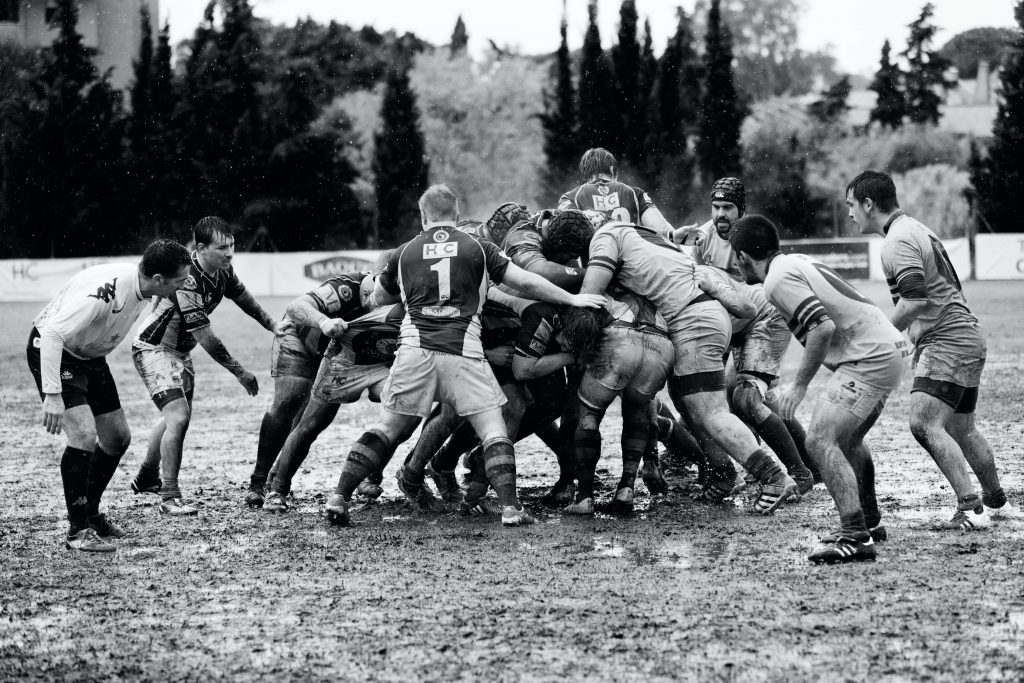
A primer on periodisation
· They emphasise “big” exercises i.e. squats, deadlifts, bench press, and military press
· They use the best set/rep/loading schemes for strength
· They manage fatigue effectively
· They are customisable
· They use periodisation…
Periodisation is long-term manipulation of training variables to promote ongoing adaptations and development. This is the vital for strength training success.
If, for example, you only ever lifted 100kg, you would only ever be 100kg strong. Your strength would plateau. Even repeated bouts of training with that 100kg would result in little in the way of progression. Ultimately, 100kg would cease to be the trigger for adaptation and, because your body is so very adaptive, it would actually find ways to make lifting that 100kg easier. In short, strength could actually diminish.
If, however, you lifted 105kg and then, in a future training session, 110kg, your strength would increase. This is the very essence of periodisation. A periodised plan is designed to grow with you so your fitness (in this case, strength) slowly but surely improves.
There are lots of different types of periodisation – some of which are described below – but, one thing is for sure, if you want to make progress, you need to follow a periodised plan!
Linear periodisation
Linear periodisation is the simplest form of progression and yet many people fail to use even this most basic method. Linear periodisation simply means adding weight to the bar week by week until you are no longer able to do so. It works very well for beginners and early intermediates but is of less use for advanced lifters who are close to their genetic potential. The example below shows weekly progressions for the squat although this method can be used for all exercises within a workout.
Week 1 – 3 sets of 5 reps 60kg
Week 2 – 3 sets of 5 reps 62.5kg
Week 3 – 3 sets of 5 reps 65kg
Week 4 – 3 sets of 5 reps 67.5kg
Week 5 – 3 sets of 5 reps 70kg
Week 6 – 3 sets of 5 reps 72.5kg
Once it is no longer possible to continue adding weight to the bar, the lifter as a couple of options. 1) drop the reps to three and continue adding weight, 2) drop the weight by 10% and start over or 3) start a new programme using a different set/rep/loading scheme or exercise.
Step periodisation
Step periodisation is similar to linear periodisation except there is a strategic deload every few weeks to try and maintain forward progress. This means that lifters have workouts where the load is reduced which should provide a mental and physical break allowing longer progress.
Week 1 – 3 sets of 5 reps 60kg
Week 2 – 3 sets of 5 reps 62.5kg
Week 3 – 3 sets of 5 reps 65kg
Week 4 – 3 sets of 5 reps 62.5kg
Week 5 – 3 sets of 5 reps 65kg
Week 6 – 3 sets of 5 reps 67.5kg
Week 7 – 3 sets of 5 reps 65kg
Week 8 – 3 sets of 5 reps 67.5kg
Week 9 – 3 sets of 5 reps 70kg
Week 10 – 3 sets of 5 reps 67.5kg
Week 11 – 3 sets of 5 reps 70kg
Week 12 – 3 sets of 5 reps 72.5kg
Week 13 – 3 sets of 5 reps 70kg
Week 14 – 3 sets of 5 reps 72.5kg
Week 15 – 3 sets of 5 reps 75kg
Week 16 – 3 sets of 5 reps 72.5kg
Week 17 – 3 sets of 5 reps 75kg
Week 18 – 3 sets of 5 reps 77.5kg
As you can see, progress is slower because workouts are repeated several times before moving on. This can help build confidence and solidify progress. As before, when progress stalls, the lifter can 1) drop the reps to three and continue adding weight week by week, 2) drop the weight by 10% and start over or 3) start a new programme using a different set/rep/loading scheme or exercise.
Block periodisation
Block periodisation has fallen out of favour of late but used to be very popular. In simple terms, it involves focusing on one specific goal for a set period before moving onto another. Although this method can produce results, much of the time, you’ll be working outside of the set/rep/loading scheme best for your goal. Also, fitness components developed in earlier training blocks can be lost as you move into other phases of training. For example:
Weeks 1-4
Block focus: muscular endurance (light to moderate weights, 15 to 20 repetitions per set)
Weeks 5-8
Block focus: hypertrophy (moderate to heavy weights, 6 to 12 repetitions per set)
Weeks 9-12
Block focus: basic strength (heavy weights, 3 to 5 repetitions per set)
Weeks 13-16
Block focus: maximal strength (very heavy weights, 1 to 2 repetitions per set)
Weeks 17-18
Block focus: active rest
Week 19
Start over…
Undulating Periodisation
With the exception of block periodisation, most periodisation models focus on one fitness component only – endurance, strength, hypertrophy, or power. However, many sports, including rugby, require a high level of performance in different fitness components simultaneously. While step periodisation, for example, can lead to maximal strength, endurance, power, and even hypertrophy can end up on the back burner. This is no real problem for athletes involved in strength sports such as powerlifting but for a multi-faceted sport like rugby, such a narrow focus might not be ideal. It makes no sense to be strong but lack power or have power but be very skinny.
There are to main types of undulating periodisation – weekly and daily.

Weekly Undulating Periodisation
In weekly undulating periodisation, set and rep schemes are rotated each week. For example:
Week 1 – hypertrophy emphasis (6-12 reps, moderate weights)
Week 2 – strength emphasis (3-5 reps, heavy weights)
Week 3 – power emphasis (3-5 reps, moderate weights lifted explosively)
Week 4 – back to hypertrophy but increase weights
The main disadvantage of this method is that no single type of training is done often enough for optimal results although by choosing similar, overlapping, training goals from week to week this can be minimized. For example, alternating between strength and power would work well, whereas adding a week of muscular endurance (15 to 20 reps, light to moderate weights) would not.
Daily Undulating Periodisation
Daily undulating periodisation uses several different loading parameters each week so that key exercises are trained with a hypertrophy, a strength, and/or power emphasis. This is a very effective way to maximise performance for sports that require a range of fitness attributes. Example weekly workout plan using the key lifts of squat, deadlift and bench press below:
Session 1
|
Squat |
5 |
5 |
80% 1RM (strength) |
|
Bench |
4 |
8 |
70% 1RM (Hypertrophy) |
|
Deadlift |
6 |
3 |
70% 1RM (Power) |
Session 2
|
Deadlift |
5 |
5 |
80% 1RM (strength) |
|
Squat |
4 |
8 |
70% 1RM (Hypertrophy) |
|
Bench |
6 |
3 |
70% 1RM (Power) |
Session 3
|
Bench |
5 |
5 |
80% 1RM (strength) |
|
Deadlift |
4 |
8 |
70% 1RM (Hypertrophy) |
|
Squat |
6 |
3 |
70% 1RM (Power) |
A forth session is recommended to provide musculoskeletal balance and address anything not worked during the “big three” workouts i.e. overhead work and pulling exercises…
Session 4
|
Pull-ups |
5 |
6 – 8 |
|
Military Press |
5 |
6 – 8 |
|
Bent Over Rows |
5 |
6 – 8 |
|
Bent Over Rows |
4 |
10 – 12 |
|
Bent Over Rows |
4 |
10 – 12 |
|
Bent Over Rows |
4 |
10 – 12 |
Example Strength Programmes Suitable For Rugby Players
There are many off-the-peg training programmes for getting stronger. Some of them are excellent, some are less so, but all will work if you stick with them and add more weight to the bar week by week. Most have a distinct slant toward hypertrophy and can best be thought of as “power building” programmes which produce both strength and muscle size. This may well be advantageous for rugby players are pure strength training (1-3 reps, very heavy weights, rests of 3-5 minutes between sets) is not conducive to hypertrophy – functional or otherwise.
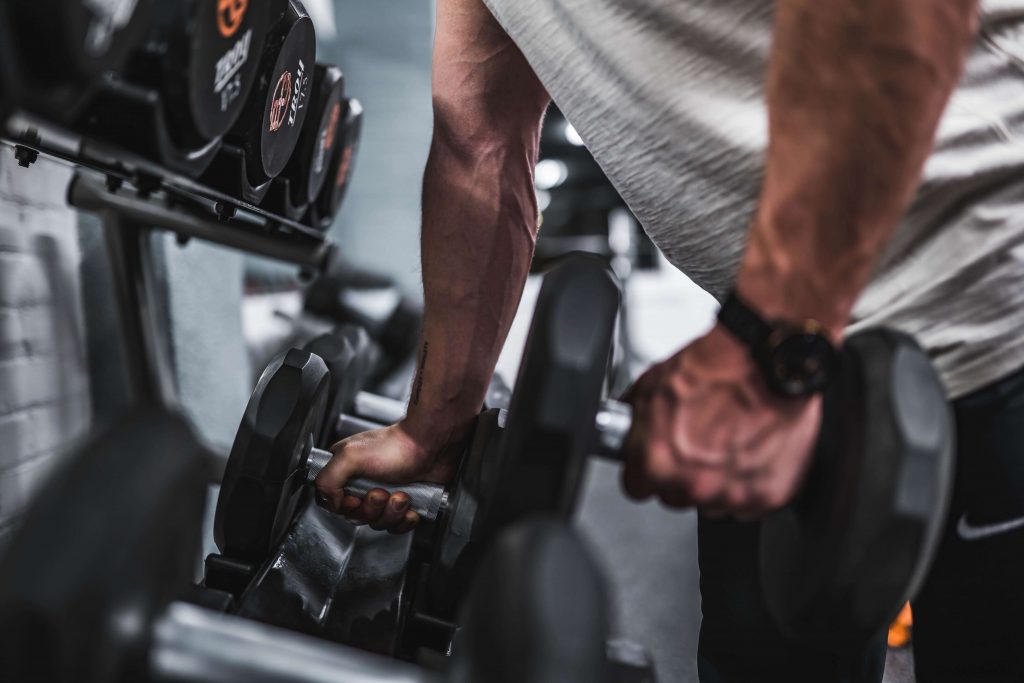
5/3/1 by Jim Wendler
5/3/1 is a percentage-based weekly undulating periodisation programme built around the four key lifts of squat, bench press, deadlift, and military press. Each week, the lifter works up to a maximum rep set (called a PR set) with a given percentage after having performed several ramped warm-ups. After the three-week cycle is completed, there is a one week deload where training continues but using lighter loads and then the sequence repeats. All workouts are based on what powerlifter and strength coach Wendler calls your “training max” which is 90% of your true or estimated one repetition maximum in the key lifts. Sets marked with + are the max-rep sets during which you try to set a new repetition maximum personal record.
There are several different templates and variations of 5/3/1 including one for powerlifting, and one that includes power cleans. Assistance exercises are added to promote muscular balance.
Example Weekly Schedule:
|
Main exercise |
Squats 5/3/1 |
Bench Press 5/3/1 |
Deadlift 5/3/1 |
Military Press 5/3/1 |
|
Assistance 1 |
Leg extensions |
Dumbbell Rows |
Leg Curls |
Chin Ups |
|
Assistance 2 |
Lunges |
Incline Dumbbell Press |
Stiff-let Deadlifts |
Side Raises |
|
Assistance 3 |
Standing Calf Raise |
Bicep Curls |
Seated Calf Raise |
Tricep Push Downs |
|
Assistance 4 |
Weight Crunch |
—- |
Dumbbell Side Bend |
—- |
Advantages
Each workout involves working to a repetition maximum which makes them very competitive and motivating. Repetition maximums can then be compared to track progress. The weekly undulating loading of this programme means multiple fitness components can be pursued simultaneously. The focus on the “big three” plus military presses means that the right exercises are being performed for developing strength. Workouts are very prescriptive so you know exactly what you need to do each time you hit the gym.
Disadvantages
For this programme to work, you need to know your one repetition maximums. Over or underesti-mating these numbers could throw out your entire programme. Being a percentage-based programme, some numeracy skills are required although there are apps and spreadsheets available to help may the calculations easier. With the exception of the deload week, each top set is taken to momentary muscular failure. While this undoubtedly increases muscle strength, it can get tiring and even demoralising after a while. When working to or close to failure, there is also a risk of injury is technique is not perfect or, in the case of the squat and bench press, your spotters are not on the ball. Big exercises are only performed once per week which might not be ideal for strength – especially those still learning to master them as practice makes perfect. Unless you add or use the template that includes power cleans, box jumps or similar exercises, there is no real power component in 5/3/1.
Conclusion
Using a barbell or dumbbells, pause mid-rep with the bar resting lightly on your chest. Do NOT relax! This pause means that each rep starts from a dead stop which makes the exercise harder and also develops explosive starting strength. A good method if you want a lighter-than normal but still productive upper body workout.
Starting Strength by Mark Pippetoe
Starting strength is a bit of a strength training classic. It’s simply linear periodisation that focuses almost exclusively on the “big three” plus a few choice accessory exercises. Despite its simplicity, Starting Strength is extremely popular and helped re-popularise “old school” basic barbell training.
Typically, starting strength uses an A/B split where two workouts (A and B) are alternated across three workouts per week. In other words:
|
|
|
| |
|---|---|---|---|
|
Week 1 |
Workout A |
Workout B |
Workout A |
|
Week 2 |
Workout B |
Workout A |
Workout B |
There are several different Starting Strength templates but they are all very similar and simple. Exercises are very limited as, Rippetoe believes, when it comes to strength training, the key to success and progress is focusing on the basics and adding weight to the bar week by week.
Workout A
· Squats
· Bench press
· Deadlifts/power cleans (alternated)
Workout B
· Squats
· Military press
· Back extension
· Chin ups
The squat, military press, and bench press are performed for three sets of five repetitions while deadlifts are performed for one set of five. Power cleans are done for five sets of three. Deadlifts, Rippetoe believes are too stressful for higher volume and frequency and that lower reps are best for power cleans. Chin-ups are done for three sets of maximum reps and back extensions for three sets of ten.
In terms of progression, as long as you hit the prescribed number of reps, you “earn the right” to increase the weights at the next session. If you miss your target, you repeat the workout once or twice until you get all your reps. If, after a couple of attempts, you are still unable to get all your reps, the weight is reduced by 15 to 20 percent and the cycle restarted. After several restarts, lifters should move to a more advanced variation, such one that involves back-off weeks, to allow for more rest.
Advantage
Starting Strength is the epitome of strength training simplicity and the antithesis of more complex, percentage-based programmes. Using arguably the best strength exercises, Starting Strength will gradually increase your strength for as long as you can keep adding weight to the bar. Three workouts per week mean that this programme works well for sportsmen as there should be time and energy left over for team training.
Disadvantage
Containing only seven exercises repeated two or even three times a week, Starting Strength can be repetitive and, while weights increase week by week, progression is slow. Not everyone gains strength in a linear fashion and for some weeks, progress may be slow and then fast the next. This is not reflected in the workouts. Deadlifting so infrequently means that this key exercise is not utilized to its fullest and Rippetoe’s belief that training this exercise more frequently will lead to overtraining is mostly unfounded. A lack of pulling exercises, compared to the number of pushing exercises, could create a muscular imbalance.
Conclusion
A good programme for strength training novices, Starting Strength’s focus on the big three plus power cleans will help build technical proficiency and basic strength. Focusing on sets of five reps will develop strength and size equally and the inclusion of power cleans provides some good power-specific training. Linear periodisation is limiting however, especially for more experienced lifters who would be better served with a more complex workout plan.

The Cube Method by Brandon Lilly
Powerlifter Brandon Lilly’s Cube method, like any good programme, is built around increasing your performance in the “big three”. Using an undulating approach to periodisation, the cube contains workouts for strength, power, and hypertrophy.
The programme is run in three-week waves. Each week, you rotate the type of work you do on each of the main movements. In Week One, you might do speed work for the squat. In Week Two, you might do rep work. In Week Three, you’d finish off with heavy work. During each training week, each lift is trained in a different style. That is, you never go heavy on two movements in the same week nor do you ever do speed work on two main movements in the same week. Everything is rotated and waved throughout the three week cycles.
Each main workout is supplemented with assistance exercises to enhance performance of the main lift. For example, on deadlift day, you might complete your workout with barbell rows, back extensions, core and grip work. The fourth day of the workout week is a dedicated bodybuilding training day where any muscular weaknesses can be addressed such as direct work for shoulders and biceps.
Advantage
The almost constant workout variety means that following the Cube method should never be dull. While the focus remains on the “big three” exercises, the rotating repetition range means that, in essence, workouts are only repeated every fourth week. This makes for a good workout for those who often feel the need to jump from programme to programme.
Disadvantage
Lack of frequency in the big lifts and the rotation of set/rep/loading schemes means it might not be ideal for developing strength and/or power. There is almost too much variation. While it does employ periodisation, similar workouts are too widely spread. This means that progress may be slower compared to other periodisation methods. Also, there is no specific power element to this programme although power exercises could easily be added.
Conclusion
The cube method generally lacks frequency in both the key lifts, which are only trained once per week, and the set/rep/loading schemes. Squatting heavy ever fourth week, for example, is not the best way to attain strength. It’s a decent general strength training programme but for rugby players, a more strength-specific approach would be a better choice.
GreySkull LP by John Sheaffer
GreySkull LP employs linear periodisation which is what the letters LP stand for. With notable similarities to both Starting Strength and Wendler’s 5/3/1, GreySkull LP consists of a base programme with the option of adding one of several “plug-ins” to round out the workouts. Plug-ins are selected according to your training goal. For example, you might add an arms plug-in if you want to bulk up your biceps and triceps for beach season.
Upper body always comes first with GreySkull LP – not a bad idea as heavy squats before any kind of pressing could limit pressing performance. Bench press and overhead pressing are alternated so each lift is done once per five days. This is better than the typical once per week approach favoured by many programmes. The final set of each exercise is designated as an AMRAP set – AMRAP being short for As Many Reps As Possible. This, like 5/3/1, is where strength is improved and lifters are encouraged to set a new personal record each week.
While assistance exercises are not prescribed (other than in the “plug-ins”), adding a couple of additional exercises to each workout to promote muscular balance is not only recommended – it’s essential. These can be chosen to address your individual weaknesses.
There is lots of focus on the “big three” lifts which makes this a good programme for building strength. Each week, the aim is to add more weight to the bar until you can no longer hit the minimum five reps in the AMRAP set. Once you stall, the weights are decreased to provide a deload period and you begin your cycle again. Alternatively, the focus can be switched from five-rep sets to threes to maintain progress.
Advantage
AMRAP (as many reps as possible) sets are a good way to develop strength and also allow a degree of auto-regulation. If you are feeling beaten up from training, your rep count will naturally decrease to reflect your level of fatigue. Similarly, if you are having a good day, you can do more reps as your energy allows. The focus on the big lifts mean that GreySkull LP will help you get stronger. Squatting twice a week is a great way to increase lower body strength and the alternating approach to bench press and overhead press means both exercises are performed equally which will help promote muscular balance and reduce injuries. Linear periodisation, while decidedly old school, undoubtedly works and, providing you stick with the plan for several months, you will definitely get stronger. Three workouts per week is an ideal training frequency for rugby players as it allows time for recovery and for sport-specific training.
Disadvantage
Sets of five reps are awesome for developing strength and hypertrophy but in the AMRAP sets, especially in the early days of the programme, your reps are likely to be higher than is ideal. Reps will only come down to a productive level after several weeks of training. GreySkull LP includes no specific power/speed work which, for recreational lifters, is not an issue but for rugby players is a distinct disadvantage. The very low volume for deadlifts could also prove detrimental.
Conclusion
While the rotation of the key exercises is a very good feature in this programme, the lack of loading variety will mean that progress will probably stall after just a few weeks or months at best. No specific power work is also a distinct disadvantage. GreySkull LP is certainly not a bad programme – it’s a lot better than what all-too many rugby players currently follow, but is not specific enough for most rugby player’s needs.
PH3: Power and Hypertrophy Training Program by Layne Norton
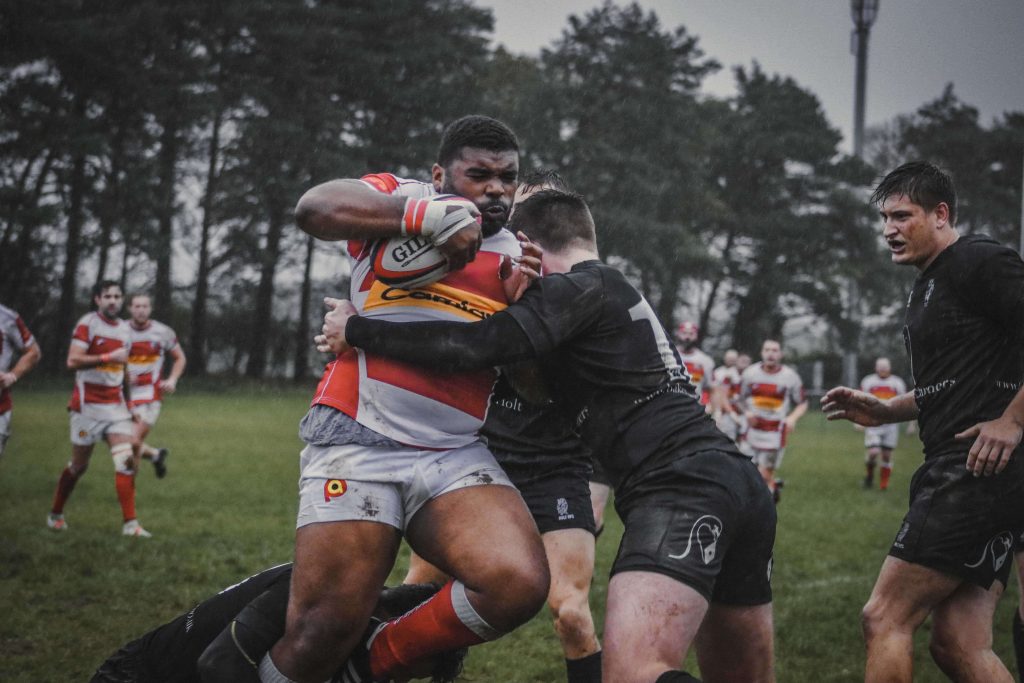
PH3, by Layne Norton Ph.D., is a 13-week training programme consisting of three four-week training blocks, as well as an additional 13th week as a taper. Using block and linear periodisation, PH3 increases in intensity over 12 weeks and then, after a one week deload/taper, starts over at the beginner.
· Weeks 1-4: Accumulation phase
· Weeks 5-8: Transition phase
· Weeks 9-12: Intensity/overreaching phase
· Week 13: Taper and test week
The first four weeks are an accumulation phase, during which you’ll build up exercise volume. The rep ranges will be a bit higher, sets of nine mostly, so you’ll be able to get a lot of volume in a short amount of time. Weeks 5-8 are an intermediate or transition block. You’ll go a little lower in reps, but you’ll still get enough reps in to get a good amount of volume. Weeks 9-12 are an intensity block. The reps will be lower, and the weights will be heavier. This is readying you for your test at the end of the programme and getting you to your maximal strength.
PH3 is designed to increase both strength and hypertrophy with more than a passing nod to power as well. It’s a very holistic programme that uses a variety of training approaches while the actually weekly plan remains the same – as detailed below.
Day 1: Squat, bench press, deadlift (light day)
Day 2: Upper-body hypertrophy day
Day 3: Squat, bench press, lower-body accessory work
Day 4: Rest
Day 5: Deadlift, bench press (heavy day, rep test), upper-body accessory work
Day 6: Squat (heavy day, rep test), lower-body accessory work
Day 7: Rest
All workouts are based on percentages of your one repetition maximum which need to be established before starting the programme. Sets/reps/loads are changed from one phases to the next and all working weights for the big lifts are prescribed according to your one repetition maximum. No calculations are required, however, as you simply need to plug your numbers into the calculator on bodybuilding.com
This is not a programme for beginners and Norton specifies that only lifters with experience and an establish level of strength should follow such a plan. He suggests the following criteria…
· A double-bodyweight deadlift 1RM
· A double-bodyweight squat 1RM
· A 1.5-bodyweight bench press 1RM
· A Wilks score of at least 300
· Maxes that have been verified fairly recently
· Multiple years of experience on the big lifts, not just a few months
Advantage
PH3 is a very structured programme that follows a sensible and proven progression. With its emphasis on the big lifts, it will help increase strength and the inclusion of dedicated bodybuilding days will also build muscle. Being based on your current one rep max, each workout is clearly laid out so you know exactly what you need to do on any given day. There is plenty of exercise variety and each block builds on what has gone before to take you to a peak in performance before starting the program again.
Disadvantage
PH3 is a high volume, high frequency workout plan that requires five gym visits per week. For many people, this is a lot of time – especially if you are also trying to train for your sport. Following a good nutrition plan will make this volume/frequency more manageable but, even then, and especially as rest is so important, you can still expect to be tired a lot of the time on such a programme.
There are also some noticeable overlaps from one day to the next which may limit performance. For example, day five calls for heavy squats and day six calls for heavy deadlifts. This means the lower back and posterior chain are worked twice in a row which, for some, could prove problematic especially considering that the lower back is a limiting factor for many people.
Another obvious overlap occurs on Monday/Tuesday/Wednesday where the upper body is trained three days in a row without rest. In the early phases of PH3, reps go as high as nine per set. This is not optimal for strength although is spot-on for hypertrophy.
Conclusion
While PH3 will undoubtedly increase your muscle strength and size, it is more of a bodybuilding program than a strength/power/performance program. The high volume and frequency is perfect for individuals whose main interest is hitting the gym but for athletes who have to also dedicate time and energy to their chosen sport, there may simply be too many workouts. Younger lifters with good recovery might find that they recover enough to do justice to this workout but older lifters may find that there simply isn’t enough recovery. This is especially true for strong lifters who often need more recovery as their workouts will be much more intense.
CrossFit
Over the last few years, CrossFit has exploded in popularity. Many see it us the ultimate workout plan and, for rugby players, it does offer some benefits. However, a lack of periodised structure means that this is not an ideal workout for rugby players or other sportsmen.
While strength and power are addressed, they are done so relatively infrequently and, because of the training law of specificity, infrequent strength and power training will not make you strong or powerful. While you might have to work up to a one, three, or five repetition maximum in the squat one day, you might not do it again for several weeks.
Another potential negative is the high rep count for power exercises such as the power clean, snatch, and box jump. If you want to develop maximal power, you need to exert maximal power – something that you simply will not do if you are performing sets of 21 reps as per many CrossFit workouts. Also, high rep sets of power exercises could easily lead to a break down in form and otherwise avoidable injury.
Many CrossFit workouts are done against the clock which can result in some people sacrificing form for a new personal best. Rugby players are, by their very nature, highly competitive, and this constant focus on breaking records can be exhausting.
CrossFit has a lot to offer from the point of view of general physical preparedness (GPP) and many of the workouts are excellent for developing conditioning and fitness but as a workout for developing quality strength or power CrossFit is not a good option.

CHAPTER 4
Rugbywarfare Training Plan Template
Martial arts legend Bruce Lee once said:
“Absorb what is useful, discard what is useless, and add what is specifically your own”
Using this approach, Lee invented what can arguably be thought of as MMA or mixed martial arts; he called it Jeet Kune Do.
While each of the workouts detailed in the previous chapter will increase your strength, build muscle and, to one degree or another, increase your power and speed, none of them are designed specifically for rugby players. So does that mean you should complete discard programmes like Wendler’s 5/3/1, Rippetoe’s Starting strength, or Layne Norton’s PH3? Absolutely not. However, you should cherry-pick the elements from each program that best suit your needs.
A Rugby-specific programme should:
· Follow a periodised approach training
· Develop strength, functional hypertrophy and power
· Be built around the “big three” plus other similiary beneficial exercises
· Be structurally balanced to avoid injuries
· Provide adequate time for recovery and sports-specific training
· Provide the best possible results in the least amount of training time
So, to that end, we are proud to present the Rugby Warfare training plan template! Using elements from some of the workouts in the previous chapter, we have designed what we believe to be THE plan for developing strength, power/speed and functional hypertrophy. Simple but effective, this workout will get the job done.
The program consists of three workouts per week to allow adequate time for recovery and rugby practices. Most major movements are trained twice per week using different set/rep/loading schemes to maximise progress. Exercises are selected that provide the most “bang” for your training “buck”. In other words, there are the best for developing strength, power or size. Each workout is a modified whole body workout which is very sport specific – that’s how your body has to work during rugby.
WORKOUT 1
Monday
|
Squats Heavy |
Ramped Sets + Back Offs |
Ramped Sets + Back Offs |
2 – 3 mins |
|
Romanian Deadlifts |
4 |
6 – 10 |
90 secs |
|
Bench Press – Speed |
5 |
3 |
90 secs |
|
Dumbbell Rows |
4 |
6 – 10 |
90 secs |
|
Hanging Leg Raises |
4 |
15 |
90 secs |
WORKOUT 2
Wednesday
|
Deadlifts Heavy |
Ramped Sets + Back Offs |
Ramped Sets + Back Offs |
2 – 3 mins |
|
Power Cleans |
5 |
3 |
2 mins |
|
Push Press |
5 |
3 |
2 mins |
|
Barbell Curls |
4 |
6 – 10 |
90 secs |
|
Barbell Skull Crushers |
4 |
6 – 10 |
90 secs |
WORKOUT 3
Friday
|
Bench Press – Heavy |
Ramped Sets + Back Offs |
Ramped Sets + Back Offs |
2 – 3 mins |
|
Med Ball Chest Throw |
5 |
5 |
2 mins |
|
Squats – Speed |
5 |
3 |
2 mins |
|
Chin – Ups |
4 |
AMRAP |
90 secs |
|
Weighted Crunches |
4 |
15 |
90 secs |
Workout Explanations
The key feature of this workout plan is the unique “ramped sets plus back offs” method used for the key strength-building exercises. Ramped sets are an underused but very effective way to provide a thorough warm up, allow for plenty of hypertrophy-beneficial volume, and also fire up the nervous system to allow for maximal force development. The back off sets keep the intensity high but allow for more quality sets to be performed. This double-pronged approach will yield great results-for strength, hypertrophy AND, somewhat surprisingly, power.
Ramped sets are deceptively simple; start with a moderate weight and gradually increase the load over several sets working your way up to the heaviest weight you can use for the chosen rep number. Only do the chosen rep number for each set, even the lighter ones, and treat each and every set like a work set. With the lighter weights, perform the exercise as explosively as possible to a) potentiate your nervous system and b) develop speed and power. Bar speed will naturally slow down as the weight increases. Your final two or three sets will be “heavy grinders” but all other sets should be fast.
Weight increases should be roughly 7-10 percent of your final set but no need to be overly precise about this – just reach your top weight in five to eight sets or there about and make sure you increase the weight by the same amount each time. For squats and deadlifts, these will be quite big jumps but for the bench press, they’ll be smaller.
Once you have hit your top set for the day, reduce the weight by ten percent (the back offs) and do two more sets using the same rep count. Here’s an example using 6-rep sets:
· Set 1 – 60kg
· Set 2 – 80kg
· Set 3 – 100kg
· Set 4 – 120kg
· Set 5 – 140kg
· Set 6 – 160kg (top set)
· Set 7 – 145kg (back off set 1)
· Set 8 – 145kg (back off set 2)
The next time you repeat this workout, start the ramp with a little more weight on the bar e.g. 62.5kg. Small increments are best as they allow for more long-term progress. If you find you are unable to complete the ramp, e.g. you only manage five reps when you should have hit six, simply repeat the workout next week and try again. If it your last week on that particular rep target, just move onto the next one and you’ll hit it no problem next time around.
While this might look like a lot of volume, in actuality it’s simply that we have formalised your warm-up sets and made them more constructive. In reality, you are only doing 3-4 top sets and all the rest are merely preparatory.
You won’t be ramping up to the same number of reps every time; instead, you’ll be using the following undulating periodised plan…
Weeks 1 – 3 Ramp up in sets of six plus back offs
Weeks 4 – 6 Ramp up in sets of four plus back offs
Weeks 7 – 9 Ramp up in sets of two plus back offs
Weeks 10 Ramp up in sets of eight but no back off sets (deload week)
Try to increase the weights week by week and, when you start back at week one, begin the sequence with heavier loads than before.
What about “speed”
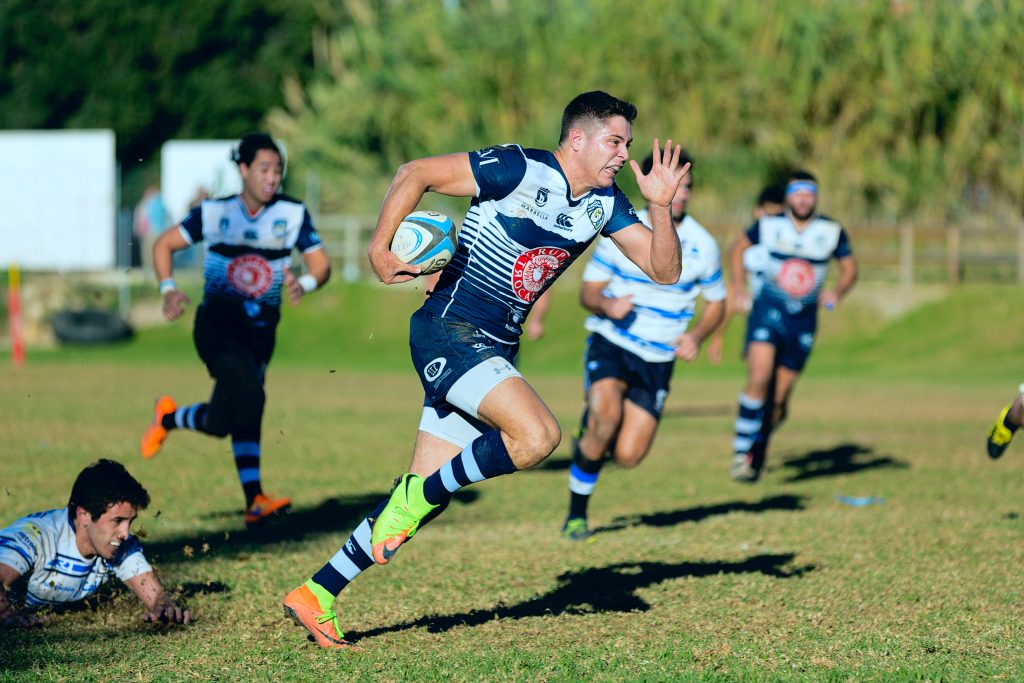
Where an exercise is designated as “speed”, perform the sets and reps prescribed but select the heaviest weight you can use without being forced to slow down. This is usually 40-50% of your one repetition maximum. Speed work typically involves five sets of three reps performed as explosively as possible. If you cannot perform the reps explosively, the weight is too heavy and you are actually training yourself to go slow rather than fast. With speed work, it’s better to go a bit too light and move faster than a heavier weight and go slower. This is specificity in action. Err on the side of caution for speed work and start out at 40% initially.
If you don’t know your 1RM you can estimate it by using the following calculation. Pick a weight and, after warming up, rep out to failure – this could be a ramped set.
Reps performed x weight lifted x 0.0333 + weight lifted = 1RM(estimated)
So, if you managed 6 reps with 90kg, your estimated 1RM is 107.982 or, using normal plate fractions, 107.5kg.
Power cleans, although not designated as a speed exercise, power cleans are exactly that. Done after heavy deadlifts, the bar should feel very light as your muscles will be potentiated by the harder work that came before. The same is true of the medicine ball chest pass throws. To perform this great exercise, kneel on a mat placed around 15 feet from a solid wall. With the ball held at chest-height, lean back slightly and then explode the ball off your chest toward the wall. Gather the ball up after it rebounds and repeat. Alternatively, perform this exercise using a training partner.
The Push Press, in workout two, is another power exercise where velocity is more important than weight. With the bar racked on the front of your shoulders and your feet shoulder-width apart, descend into a quarter-squat and then rapidly stand up. Use this momentum to help you drive the bar up and overhead. Lower the bar back to your shoulders and repeat. Using the momentum of your legs you should blast though any sticking points. If you can’t, the weight is too heavy. Expect to push press more than you can normally strict press.
Assistance exercises
Secondary and assistance exercises are typically prescribed using a rep range – e.g. 6 to 10. In this instance, choose a weight that allows you to perform all the designed sets with 6 reps. Next time you repeat this exercise, add a single rep to one set. Keep adding one rep per set until you reach the upper repetition range for all prescribed sets. At that point, increase the weight, drop back to the low end of the rep scale and repeat the same progression. For example:
· Week 1 – 6, 6, 6, 6, Reps
· Week 2 – 7, 6, 6, 6, Reps
· Week 3 – 7, 7, 6, 6, Reps
· Week 4 – 7, 7, 7, 6, Reps
· Week 5 – 7, 7, 7, 7, Reps
· Week 6 – 8, 7, 7, 7, Reps
· Week 7 – 8, 8, 7, 7, Reps
· Week 8 – 8, 8, 8, 7, Reps
· Week 9 – 8, 8, 8, 8, Reps – increase weight each set
· Week 10 – 6, 6, 6, 6 Reps
The only exception to this double progression method is chin-ups. Simply perform As Many Reps As Possible, designated AMRAP, in the programme. Try to do an extra rep or two each week so that the combined total for the four sets gradually increases. For core work, just make sure the last few reps of each set are challenging. Your abs are going to be working hard as stabilisers in virtually every other exercise in the programme so no need to do a huge amount more.
A word about warm-ups and cool-downs
Warming up properly may reduce your risk of injury and can certainly enhance performance. However, spending too long on your warm up can be a waste of energy and counter-productive. Ramped sets are one of the best ways to warm up and will cover most your preparatory bases – especially if you focus on a full range of movement and take shorter breaks for the initial sets top maximise warmness.
By all means spend a few minutes doing some light cardio, dynamic stretching and foam rolling before you start each workout but there is no need to overdo it. If you feel like you need a longer warm up, double up on some of the early ramp sets – in other words, do an extra set or two at the lighter weights. This doubling up of early ramp sets also provides a good opportunity to practice your technique.
Once your workout is complete, it’s time to stretch and as each workout is essentially a full body training session, you should do a full-body stretch. Start at your calves and work up, start at your shoulders and work down, go from standing, to seated to lying or vice-versa. It doesn’t matter that much how you organize your stretching routine so long as you actually have one. Hold all stretches for at least 15 seconds but feel free to go up to a minute or more for very tight muscles. Foam rolling can also be useful in the coo down period.
CHAPTER 5
Conclusion
The Rugby Warfare Training Plan PDF has helped give structure to my training over pre-season. Learning how all the styles of training impact on-field performance has been a huge revelation to me. I feel stronger, faster and bigger after adopting a structured training plan like this.
Daniel Thomas

There is no such thing as the perfect programme – unless it’s written specifically for you by an experienced coach who has assessed your specific requirements and has years of experience on how your body works, adapts and grows. However, even a perfect programme will not work unless you put the effort in.
Virtually any program, even a bad one, will produce some results if you adhere to it and strive to add weight to the bar week by week.
That being said, you’ll get far better, faster results by following a good program than a bad one. Most bodybuilding programmes fall into the bad category for all the reasons discussed at the beginning of this book: no specificity, no periodisation, splitting the body down into arbitrary parts, not enough focus on the big exercises, too much variety, too many isolation exercises – you remember!
The Rugby Warfare workout avoids all of these traps, focuses almost exclusively on the most effective exercises for strength, power, and functional hypertrophy and, best of all, you don’t even need an especially well-equipped gym; a basic barbell, dumbbells, bench and squat rack is all you require.
Avoid the temptation to add more to the program – it really doesn’t need it. Its effectiveness lies in its simplicity. Of course, simple doesn’t mean easy and you still have to work hard and strive to do a little more from one week to the next if you are going to get stronger.
Despite what you may hear or read, strength training doesn’t have to be complicated and men have been building strength using simple methods for hundreds of years. Have faith in the programme, add weight to the bar week by week, and you will get stronger. Make sure your diet supports your training, get adequate rest, and you too can become an unstoppable force of nature on the rugby pitch.
P.S You can buy any 3 items from our new range for £50 (saving you £25), We ship globally too
Use code “3for50” to apply the discount.
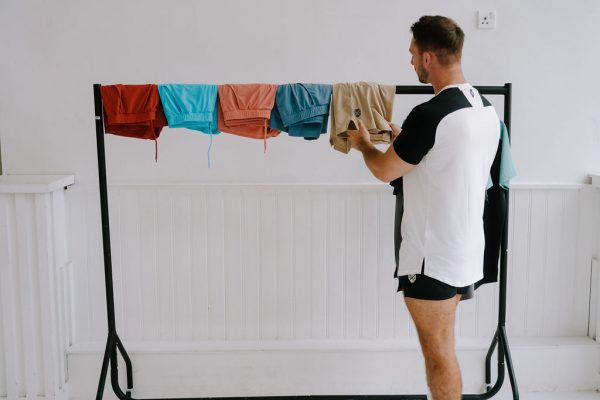
Comment
